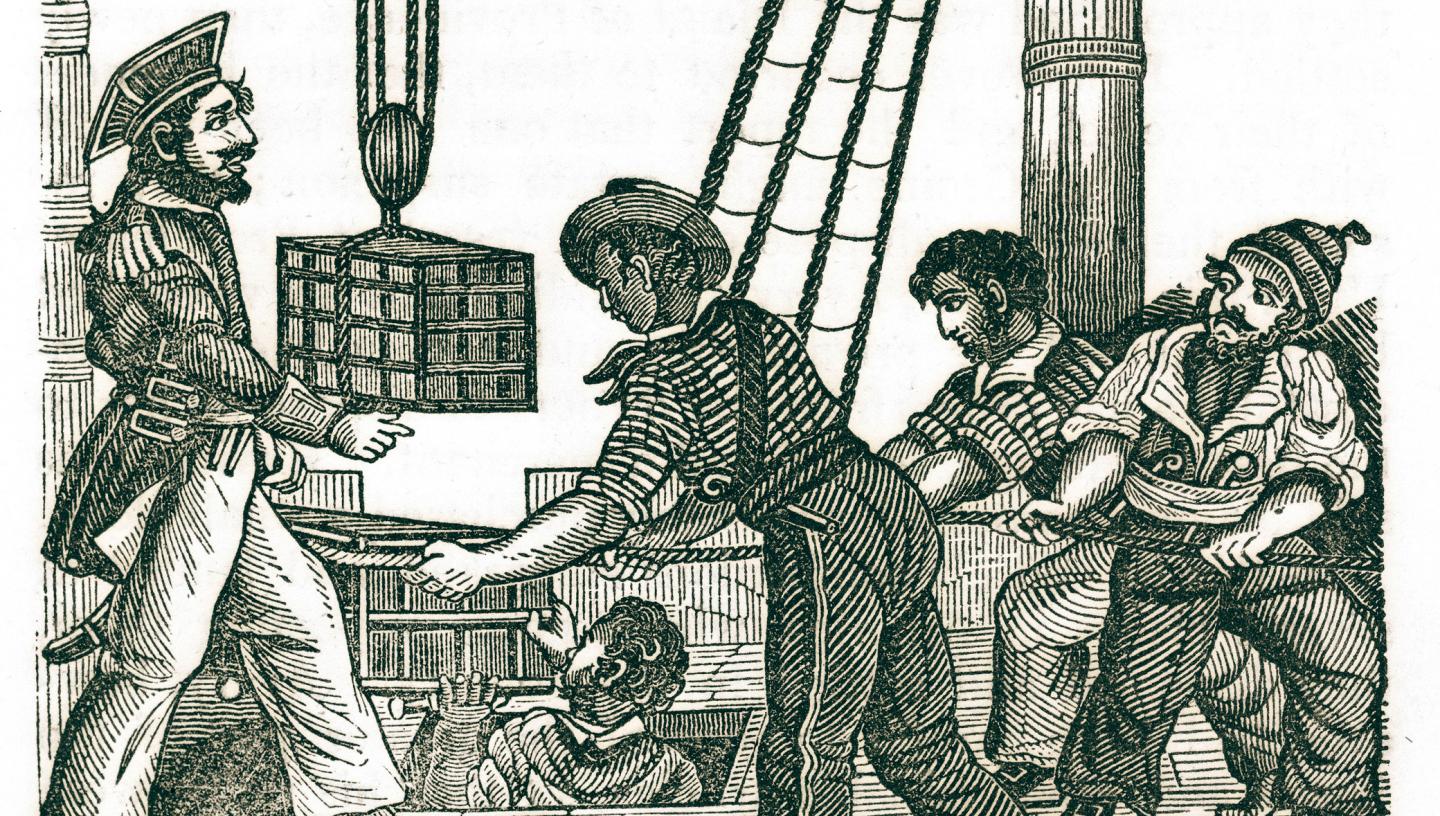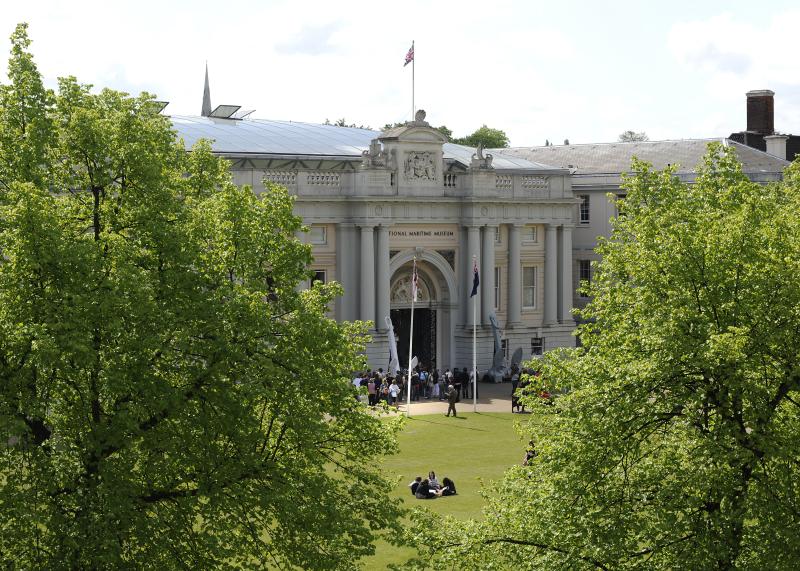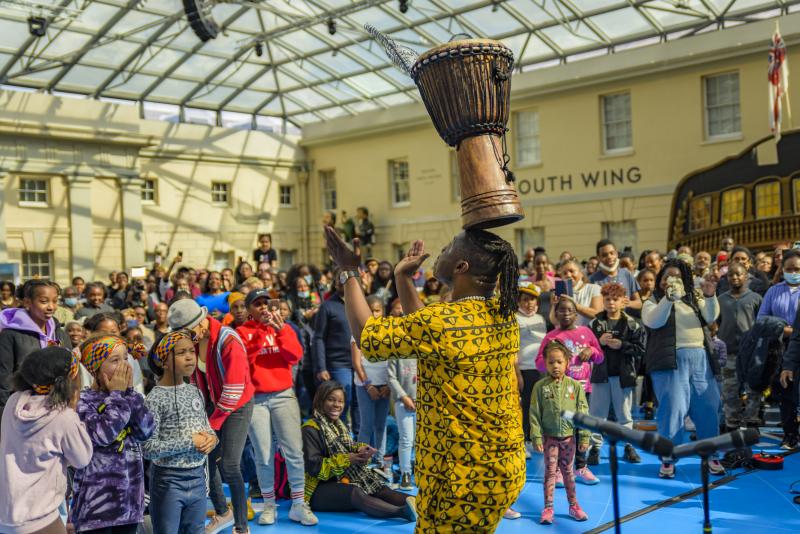
What do pirates do?
Who became a pirate and what was life like for them? Step into the world of pirates in the classic age of piracy.
What is a pirate?
A pirate is a robber who travels by water. Though most pirates targeted ships, some also launched attacks on coastal towns.
We often think of pirates as swashbuckling and daring or evil and brutish, but in actual fact most of them were ordinary people who had been forced to turn to criminal activity to make ends meet.
Where did pirates live?
When on the high seas, any one who wasn't a captain would sleep out in the open, either in a hammock or on the floor. There were however, 'pirate havens'. Regions of the Indian Ocean and Madagascar were often safe places for pirates to stay, outside of the law and state governance.
Did pirates bury their treasure?
Curator of World and Maritime History Robert Blyth takes on the Curators Against the Clock challenge to answer this question.
Who were the first pirates?
Pirates have existed since ancient times. They threatened the trading routes of ancient Greece, and seized cargoes of grain and olive oil from Roman ships. Later, the most famous and far-reaching pirates in early Middle Ages Europe were the Vikings.
The 1494 Treaty of Tordesillas meant that the lands discovered by Christopher Columbus were divided between Spain and Portugal. They were ruled under Spanish and Catholic law.
Whilst this treaty meant that Spain and Portugal had agreed on the divide, the English didn’t think that the Pope had the right to seize land that they wanted. They decided to do something about it.
Under Queen Elizabeth I, Britain’s naval powers were growing. She sanctioned civilian sailors to attack Spanish ships, steal cargo and bring it back. Whilst this might have appeared to piracy to the outside world, to the British it made you a hero – such as Sir Francis Drake.
'Golden Age' of piracy
Thousands of pirates were active from 1650–1720. These years are sometimes known as a 'Golden Age' of piracy. Famous pirates from this period include Blackbeard (Edward Teach), Henry Morgan, William 'Captain' Kidd, 'Calico' Jack Rackham and Bartholomew Roberts.
During this time news of piracy reached the ears of both rich and poor. Ballads about topical events were sung on the streets. Newspapers could be freely read in coffee houses for the price of a dish of coffee. There was a spectrum of opinion about the exploits of the more notorious pirates. Published images often showed them as powerful and well dressed.
Find out more about the most famous pirates
Learn more about the Golden Age of Piracy
Life on a pirate ship
We know the legend of swashbuckling, treasure chests and plank-walking, but what was a pirate's life actually like, and who chose to pursue this life of crime?
Some historians have described pirate ships as the original republics. Pirate captains had to be elected, with all decisions made upon the basis that they benefitted the crew. Any money that was captured was shared equally amongst the crew. pirate ships did not have the same hierarchical discipline as navy ships. Pirate crews tended to be less divided by national, religious and racial differences than communities were on land.
There was however also tough discipline on board. If you failed to follow the rules, you could be flogged, killed, or marooned. There were also long periods without food or medical supplies, and the only option was to go hungry.
Where did pirates come from?
Although more British pirates were born in London than other seaports, there is no doubt that the most famous pirates were born elsewhere:
- Henry Morgan, Bartholomew Roberts and Howell Davis were Welsh
- Captain Kidd and John Gow were born in Scotland
- Avery was from Plymouth
- Blackbeard was from Bristol
What sort of booty did pirates seize?
The most precious prizes were chests of gold, silver and jewels. Coins were especially popular because pirate crews could share them out easily.
Emeralds and pearls were the commonest gems from America, providing rich plunder. However, pirates did not only seize precious cargoes like these. They also wanted things they could use, such as food, barrels of wine and brandy, sails, anchors and other spare equipment for their ships. Things as simple as flour and medicine were treasured steals. Often pirates were just trying to find the necessities of life.
How did pirates attack other ships?
Pirate ships usually carried far more crew than ordinary ships of a similar size. This meant they could easily outnumber their victims. Pirates altered their ships so that they could carry far more cannon than merchant ships of the same size. Stories about pirate brutality meant that many of the most famous pirates had a terrifying reputation, and they advertised this by flying various gruesome flags including the 'Jolly Roger' with its picture of skull and crossbones. All these things together meant that victims often surrendered very quickly. Sometimes there was no fighting at all. It's likely that most victims of pirates were just thrown overboard rather than being made to ‘walk the plank’.




